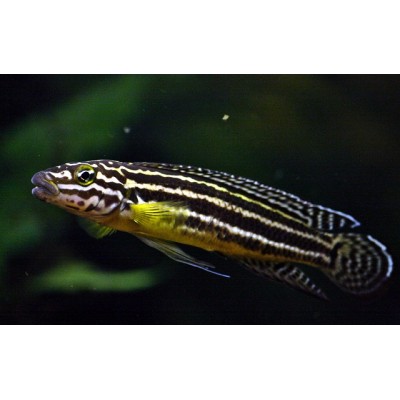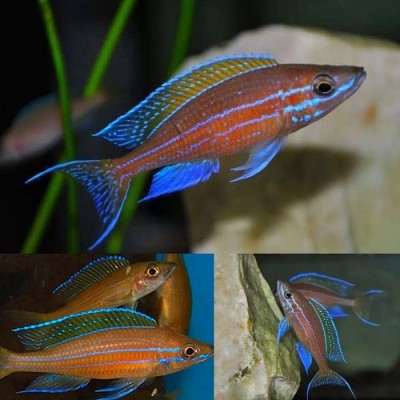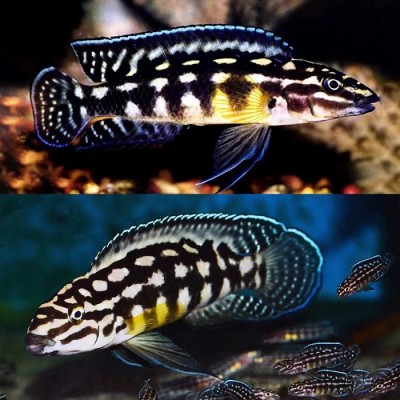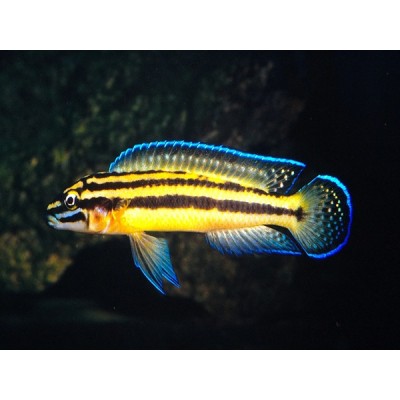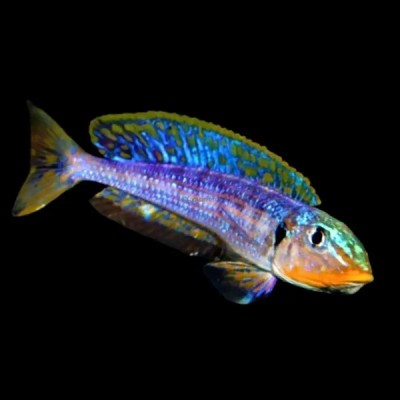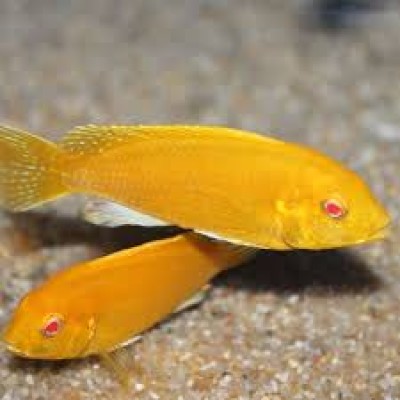-600x600.jpg)
-600x600w.jpg)
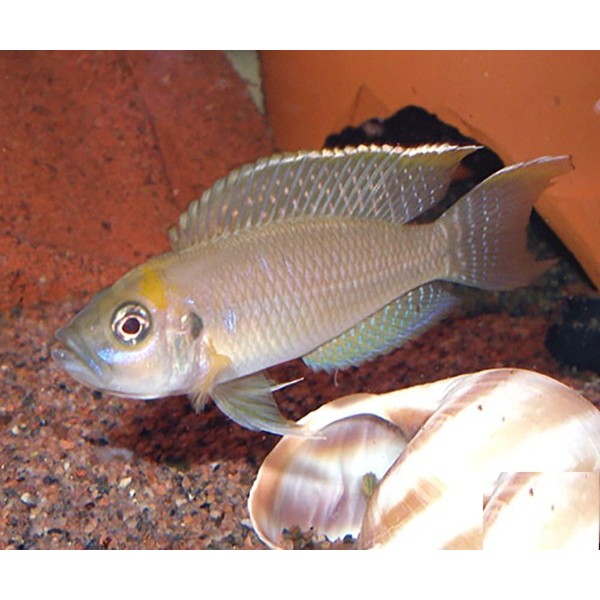
-80x80.jpg)
-80x80h.jpg)

Sun Spot Shell Dweller Cichlid – A Unique Tanganyikan Fish
The Sun Spot Shell Dweller Cichlid (Lamprologus calliurus) is a fascinating freshwater species from Lake Tanganyika. Known for its golden “sun spots” on the dorsal fin and compact size, this cichlid adds vibrancy to any tank. Moreover, its intriguing shell-dwelling behaviour and territorial instincts make it a captivating choice for aquarists who enjoy observing natural behaviours.
Size and Lifespan
This species grows to a modest size of 6–7 cm, making it ideal for smaller setups or species-specific tanks. With proper care, they can live for 8–10 years. Ensuring stable water conditions and a protein-rich diet helps them thrive and display their best colours. Furthermore, their small size and fascinating habits make them a rewarding addition to Tanganyikan-themed aquariums.
Tank Size and Setup for Shell Dwellers
A 75-litre tank is the minimum recommended size for a Sun Spot Shell Dweller Cichlid, though larger tanks are better for colonies. Use a sandy substrate to accommodate their natural digging behaviour, and provide several empty snail or escargot shells for shelter and breeding. These fish thrive in water temperatures of 24–27°C and require a pH of 7.8–9.0. Additionally, weekly water changes and a reliable filtration system are crucial for maintaining their health.
Ideal Tank Mates for the Sun Spot Shell Dweller Cichlid
Though territorial, this cichlid is peaceful with the right companions. Suitable tank mates include other Tanganyikan species, such as Julidochromis or Cyprichromis, that match their size and temperament. Avoid keeping them with larger, aggressive fish that could dominate the tank. Providing plenty of space, shells, and hiding spots reduces competition and ensures harmony in the aquarium.
Feeding and Nutrition
The Sun Spot Shell Dweller Cichlid thrives on a carnivorous diet. High-quality micro pellets or granules should be their staple food. Supplement their meals with live or frozen options like brine shrimp, bloodworms, or daphnia to keep them healthy and vibrant. Feed them small portions twice daily, ensuring all food is consumed promptly. Moreover, removing uneaten food helps maintain water clarity and prevents waste buildup.
Breeding and Care for Fry
Breeding this species is relatively easy under the right conditions. Males are slightly larger and more colourful, while females are smaller with rounder bodies. Females lay their eggs inside shells, where the fry will remain until they are ready to explore. Both parents protect the fry, showing strong parental instincts. To boost fry survival rates, offer crushed flakes or baby brine shrimp and ensure the tank remains peaceful.
Species Overview
- Species: Lamprologus calliurus
- Common Name: Sun Spot Shell Dweller Cichlid
- Origin: Lake Tanganyika, Africa
- Diet: Carnivore
- PH Range: 7.8–9.0
- Temperature: 24–27°C
- Max Size: 6–7 cm
- Tank Size: 75 litres
FAQs
1. Can Sun Spot Shell Dweller Cichlids live in community tanks?
Yes, but only with peaceful, similarly sized species like Julidochromis or Cyprichromis.
2. How many shells do they need?
Provide at least 2–3 shells per fish to reduce competition and ensure shelter.
3. Do they uproot plants?
Yes, they often dig around the substrate, so use hardy plants like Anubias or Java fern.
4. How often should I feed them?
Feed them twice daily in small portions, ensuring all food is eaten within a few minutes.
5. What is the best way to encourage breeding?
Maintain stable water conditions and provide ample shells for spawning.
Add the vibrant Sun Spot Shell Dweller Cichlid to your aquarium today! Their fascinating shell-dwelling behaviour, stunning appearance, and compact size make them a standout addition to any Tanganyikan setup. Order now to enhance your tank!
- Stock: 30
- Model: SUNSPOT SHELL DWELLER
- SKU: IMPORTED F2

